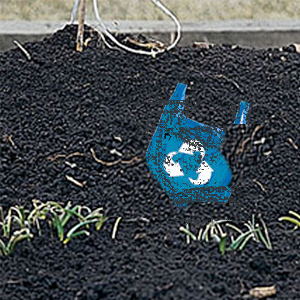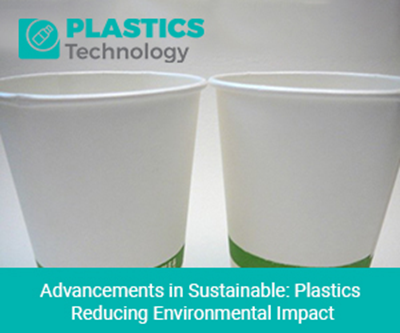How to Integrate Robotics and Automation into Plastic Production Facilities

Integrating robotics and automation into plastic production facilities can enhance efficiency, accuracy, and overall productivity. Here's a step-by-step guide on how to implement these technologies:
1. Conduct a Facility Assessment:
Conducting a thorough facility assessment is the initial step in integrating robotics and automation into plastic production facilities. This involves a comprehensive evaluation of current production processes to pinpoint areas where automation can yield maximum benefits. Consideration should be given to the types of plastics manufactured, production volumes, and the complexity of existing processes. This assessment lays the foundation for informed decision-making regarding the implementation of technologies tailored to the specific needs and challenges of the facility.
2. Set Clear Objectives:
Setting clear objectives is crucial for the successful integration of robotics and automation in plastic production facilities. Define specific goals that align with the desired outcomes, such as increasing production speed, minimizing errors, enhancing product quality, and improving overall safety conditions. Establishing measurable targets ensures a focused and strategic approach, guiding the implementation process towards tangible benefits for efficiency, accuracy, and workplace safety. Clear objectives also provide a benchmark for evaluating the success and impact of the automation initiatives over time.
3. Investigate Technology Options:
When investigating technology options for integrating robotics and automation into plastic production, it's essential to research various solutions tailored to the industry's specific needs. Explore technologies like robotic arms, automated conveyor systems, and injection molding automation, as these can address different aspects of the production process. Additionally, prioritize solutions that are easily integratable into your existing production setup, ensuring a smooth transition without significant disruptions. This research phase enables you to make informed decisions about selecting technologies that align with your production requirements and contribute to enhanced efficiency and productivity.
4. Employee Training:
Implementing effective employee training programs is vital for the successful integration of robotics and automation in plastic production facilities. Provide comprehensive training to familiarize employees with the new technologies, ensuring they understand the operation, maintenance, and interaction with automated systems. Emphasize the benefits of automation, such as increased efficiency, reduced manual labor, and improved safety. Address any concerns or resistance by creating an open communication channel, addressing misconceptions, and showcasing how automation can enhance their roles. A well-executed training strategy not only facilitates a smooth transition but also fosters a positive mindset among employees, encouraging collaboration with automated systems for optimized production outcomes.
5. Collaborate with Robotics Experts:
Collaborating with robotics and automation experts is crucial for a successful integration into plastic production facilities. Consult with professionals in the field to gain insights into the specific needs and challenges of your facility. Engage with vendors who specialize in automation solutions, seeking those with a track record in the plastics industry. Work closely with these experts to tailor solutions that align with your production requirements, ensuring the selected technologies are optimized for your facility's unique processes. This collaboration enhances the likelihood of seamless integration and maximizes the benefits of robotics and automation in improving efficiency and productivity.
6. Start with Pilot Projects:
Initiating small-scale pilot projects is a critical step in the integration of robotics and automation into plastic production facilities. Implementing these projects allows for the practical testing of chosen technologies in a controlled environment. Assess the effectiveness of the automation solutions and closely monitor their performance. Identify and address any challenges or issues that arise during the pilot phase promptly. This approach provides valuable insights, helps refine the implementation strategy, and ensures that any necessary adjustments can be made before scaling up the technology across the entire production facility. The pilot phase serves as a learning opportunity to optimize the integration process and enhance the overall success of automation initiatives.
7. Integration with Existing Systems:
Seamless integration with existing manufacturing systems is crucial for the successful implementation of robotics and automation in plastic production facilities. Ensure compatibility with systems such as Enterprise Resource Planning (ERP) and Manufacturing Execution Systems (MES). This integration allows for real-time data exchange, streamlined communication, and coordinated workflow between automated processes and the broader production environment. Thoroughly test and validate the compatibility of the new technologies with existing systems to prevent disruptions and optimize the overall efficiency of the integrated manufacturing ecosystem. A well-integrated system enables better control, monitoring, and coordination, enhancing the overall performance of the plastic production facility.
8. Safety Measures:
Prioritizing safety measures is paramount when integrating robotics and automation into plastic production facilities. Implement comprehensive safety protocols to safeguard the well-being of workers and ensure the proper functioning of automated systems. Integrate safety features directly into the robotic systems, including sensors that can detect obstacles or human presence and emergency stop mechanisms to halt operations in case of any potential hazards. Regularly conduct safety training for employees to familiarize them with the automated systems and emergency procedures. A strong emphasis on safety not only protects personnel but also contributes to a smooth and secure operation of the integrated technologies within the production environment.
9. Continuous Monitoring and Optimization:
Continuous monitoring and optimization are essential components of successful robotics and automation integration in plastic production facilities. Regularly assess the performance of automated systems, using data analytics to gain insights into their efficiency and effectiveness. Identify opportunities for improvement by analyzing production data, minimizing downtime, and addressing any bottlenecks or issues that may arise. Implement a proactive approach to maintenance based on data-driven insights to ensure the sustained reliability of the automated technologies. Through continuous monitoring and optimization, you can enhance overall efficiency, reduce operational costs, and maintain a competitive edge in the rapidly evolving landscape of plastic production.
10. Scale Up Gradually:
After successful pilot projects, a gradual scale-up is crucial for the effective implementation of robotics and automation in plastic production facilities. Expand the use of automated technologies across the entire production facility in phases, taking into account the lessons learned from the pilot phase. Evaluate the scalability of the technology, considering factors such as increased production volumes, system complexity, and potential integration challenges. During the scale-up process, closely monitor performance metrics, address any issues that may arise, and make adjustments accordingly. This phased approach ensures a smoother transition, allowing for fine-tuning and optimization as the implementation progresses throughout the entire production environment.
11. Maintenance and Support:
Establishing a regular maintenance schedule is crucial to prevent breakdowns and ensure the continuous operation of automated systems in plastic production. Develop a support system with technology vendors for efficient troubleshooting and issue resolution. Implement remote monitoring and prioritize documentation for knowledge transfer, enabling your maintenance team to handle routine tasks independently. Continuous improvement through feedback and collaboration with vendors enhances system reliability and performance over time.
Stay Informed about Technological Advances:
Staying informed about technological advances in robotics and automation is essential for ensuring your plastic production facility remains competitive. Regularly update your knowledge of emerging technologies, industry trends, and innovations. Attend conferences, participate in industry forums, and engage with technology vendors to stay at the forefront of developments. By staying informed, you can strategically adopt new technologies that align with your production needs, ultimately improving efficiency, reducing costs, and maintaining competitiveness in the rapidly evolving landscape of the plastic manufacturing industry.



